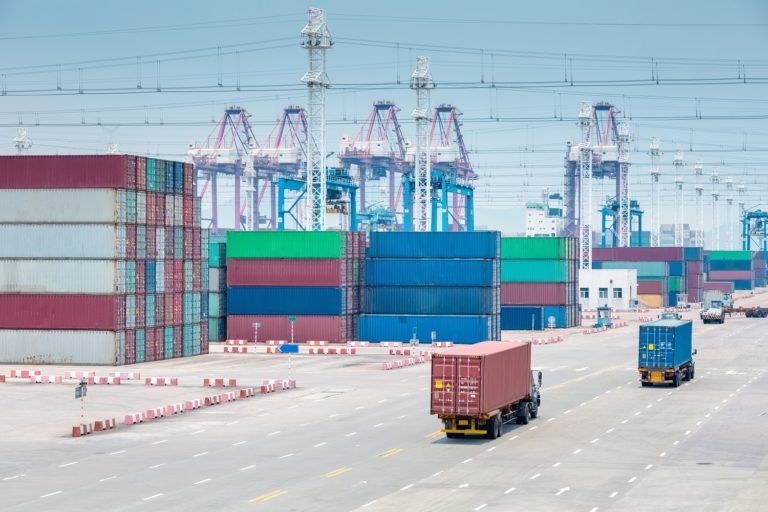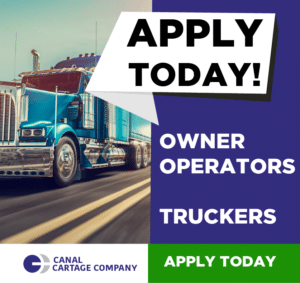The Port of Houston Texas is one of the largest and highest volume commercial drayage ports in the Gulf of Mexico. Every year, 69% of all freight that enters into Texas is managed by local drayage providers for commercial businesses.
According to 2018 statistics released by the U.S. Department of Commerce Bureau of Census, Port Houston is ranked 6th in America by total TEUs (twenty-foot equivalent unit), or containers that are imported and exported through Houston. In Texas, Port Houston has 45% of the market share by tonnage but manages 96% of all containers that arrive to our State.
Business owners that rely on imported goods, raw materials or retail products trust established drayage service providers like Canal Cartage in Houston, to provide reliable, timely and competitively priced pick-up or delivery of commercial containers. We would like to share what goes on behind the scenes as a process and procedure, for every drayage shipment we manage for our customers.
Step One: Receiving the Shipping Request
Commercial businesses contact Canal Cartage through our quote engine on our website, to get a fast and competitive rate on their freight requirements. They can also fax or call our customer support team for prompt assistance.
Once that request for freight or drayage services in Houston comes through, our customer support team reviews the details of the order and then contacts the customer to confirm the rate. During that telephone call, any additional details required including the type of cargo, size, dimensions and shipment weight are also confirmed. Other documentation regarding hazardous materials is verified at this step so that we can match the appropriate driver (HME certified) for specialty cargo.
Commercial drayage in Texas is bilateral, and Canal Cartage assists companies who are shipping goods or raw materials out of Texas, and into Mexico by land, or to the Port of Houston. Most freight volume, however, is conducted assisting businesses with container pickup at Port Houston, and then delivering to a business location in Texas, or surrounding states like Arkansas, Oklahoma, Louisiana, and New Mexico.
Step Two: Chassis and Driver Scheduling
One of the obstacles for many commercial drayage providers is a shortage of chassis. Some have to rent them from other providers, to deal with volume requests. At Canal Cartage, we’ve invested in quality equipment, and have 800 company-owned chassis to meet the growing demand for drayage, at Port Houston.
Full Container Loads (FCL) and Less Than Container Loads (LCL) are expedited with different procedures. An FCL shipment is a standard pickup, where the CDL operator will pick up the required container on a chassis that is approved for the weight of the cartage. Since FCL shipments can vary from light retail products, such as apparel, household goods, etc. to industrial construction or raw materials, there are different chassis used by regulation, for the transportation of overweight goods. Featherweight trucks are triaxle and are used to haul overweight freight, allowing each light truck to pull an additional 6,000 pounds within regulations. We also have intermodal agreements with Texas railroads, to transfer drayage to rail where required for our commercial customers.
With thirty-six years of experience in domestic drayage, our team at Canal Cartage matches the right driver, truck, and chassis for the commercial freight service. The order is then entered into our system, which also allows our commercial customers access to our freight portal, where they can track the pickup and delivery of their goods in real-time.
Step Three: Pick up at Port Houston
One of the factors that impact the pickup and delivery schedule of commercial freight, is the volume of traffic that day, at Port Houston. As we mentioned, Port Houston is by far the busiest commercial Port in the Gulf of Mexico, and one of the highest volume ports in the United States. So, what happens when the driver and chassis arrive at Port Houston?
There are many permits that have to be processed and presented, as part of the drayage service. From the Permit to Transfer (PTT) to the General Order (GO), Warehouse Entry Freight and In Bond Freight. The documentation is required for transporting goods from Mexican border cities such as Brownsville Texas, El Paso, Laredo, and Harlingen Texas.
Each heavy truck that enters Port Houston must:
- Get in the queue or line (this can take several hours depending on the volume of drayage pickups that day).
- Presentation of the Dock Receipt or Pick Up Order. This contains the name of the vessel that the cargo is arriving on, a complete description of the cargo or commodities, and a bill of landing number. This information is also required for a drop-off of cargo.
- Be directed to the vessel, and then present documentation to receive the container.
- Park the chassis where directed to by the Port Authority workers, who dispatch a loader or ‘lifter’ to put the container of goods (where FCL) on the truck.
When commercial customers have requested drayage pickup for an LCL (Less Than Container Load), the driver from Canal Cartage will be directed to a different location where palletized materials are stored securely after offloading from the ocean vessel. The driver will wait until a designated forklift will load the pallet(s) onto the truck, after verifying appropriate documents and transfer paperwork.
When Canal Cartage has successfully picked up our customer’s commercial freight, we will update the information on our portal, so that the client may see what time processing at Port Houston was completed, and when the freight is on route for delivery to the requested location, by truck or intermodal (rail).
Step Four: Delivery to Warehouse or Commercial Location
Canal Cartage works in partnership with experienced owner-operators, who have demonstrated a commitment to safety, security and legal requirements for seamless commercial shipping services. We adhere to HOS (hours of service) regulations, and each driver updates ELDs (electronic logging devices) to ensure the safe delivery of each commercial drayage delivery or pickup we manage.
Because of the new restrictions to HOS by law, drivers are legally required to take mandatory breaks within service hours. Our customer service portal allows our commercial clients to be constantly updated regarding the location of and estimated delivery time for each shipment.
When you are choosing a commercial drayage provider in Houston, trust the experience and reputation for service excellence that we have built at Canal Cartage. We are industry experts and treat every drayage service with the integrity and security that commercial business owners rely on. Contact us today for more information, and a Houston drayage rate quote.



